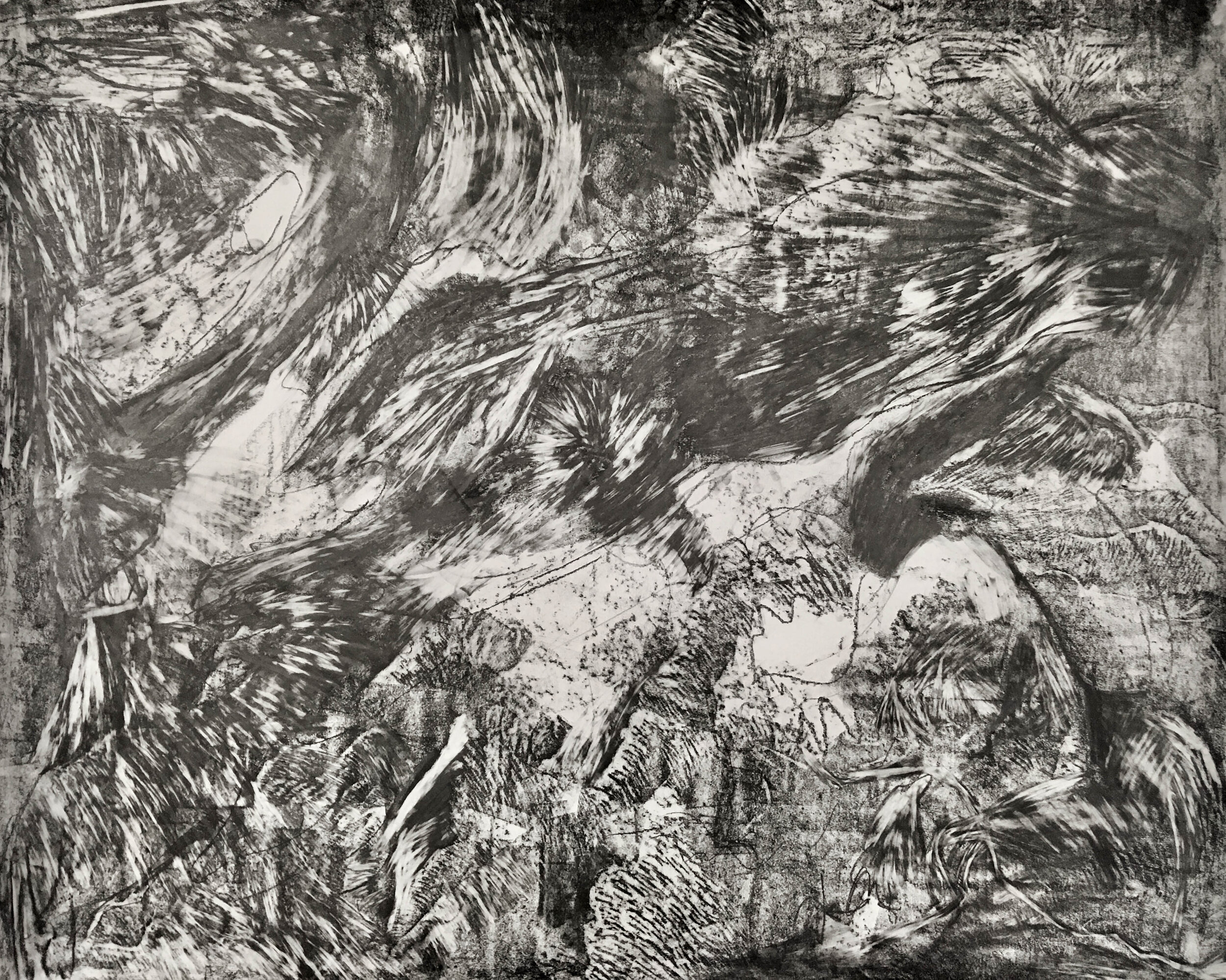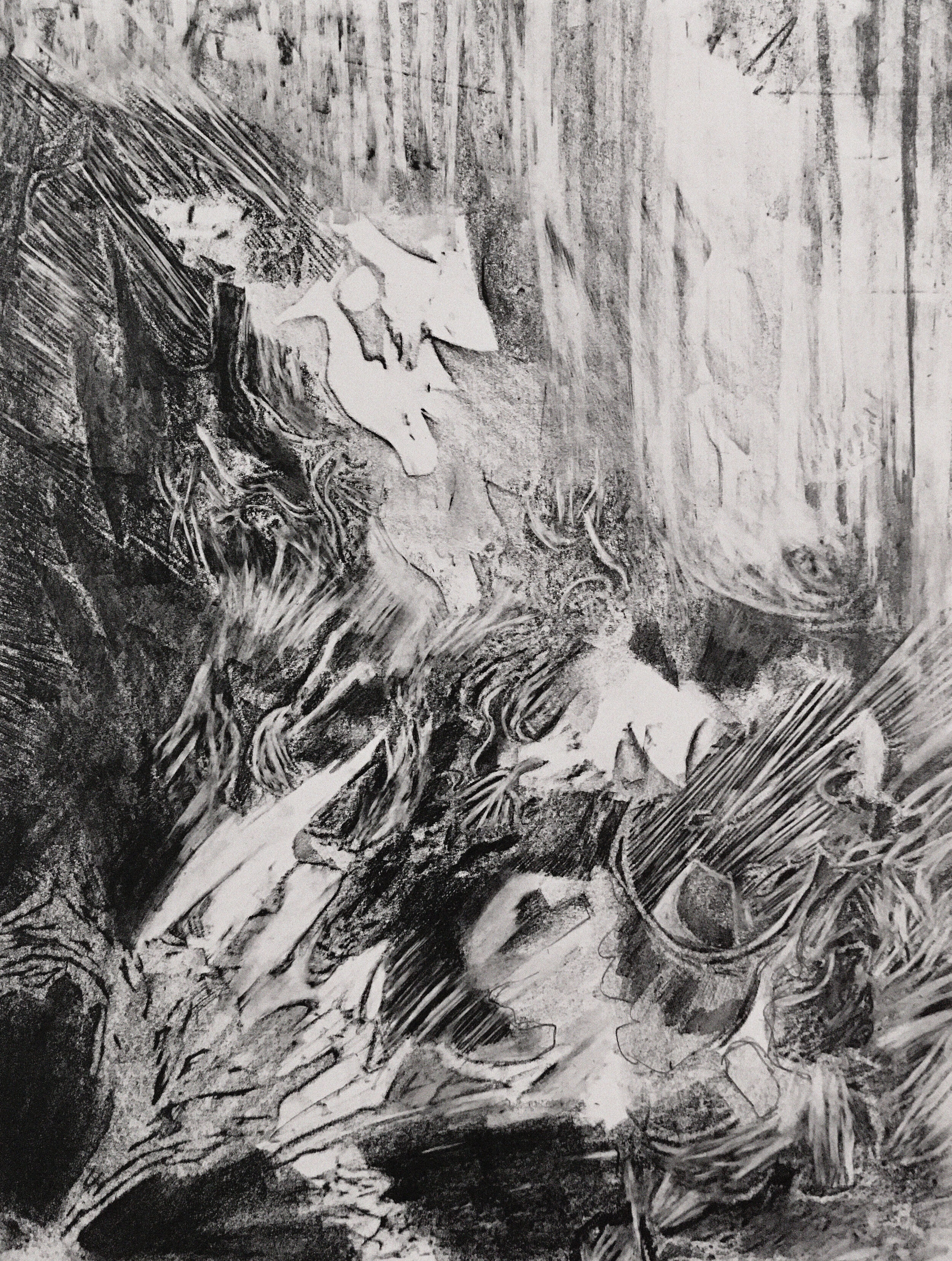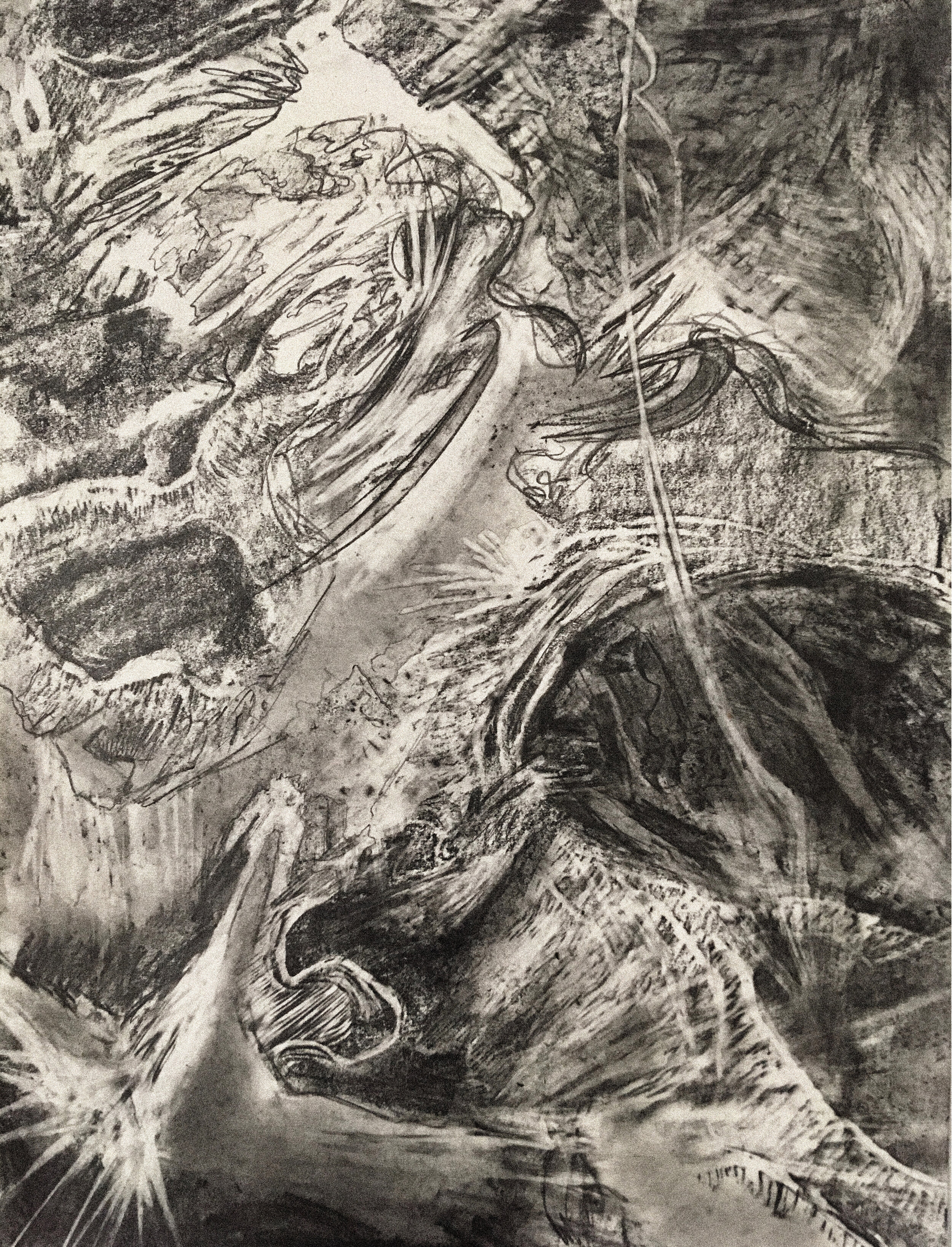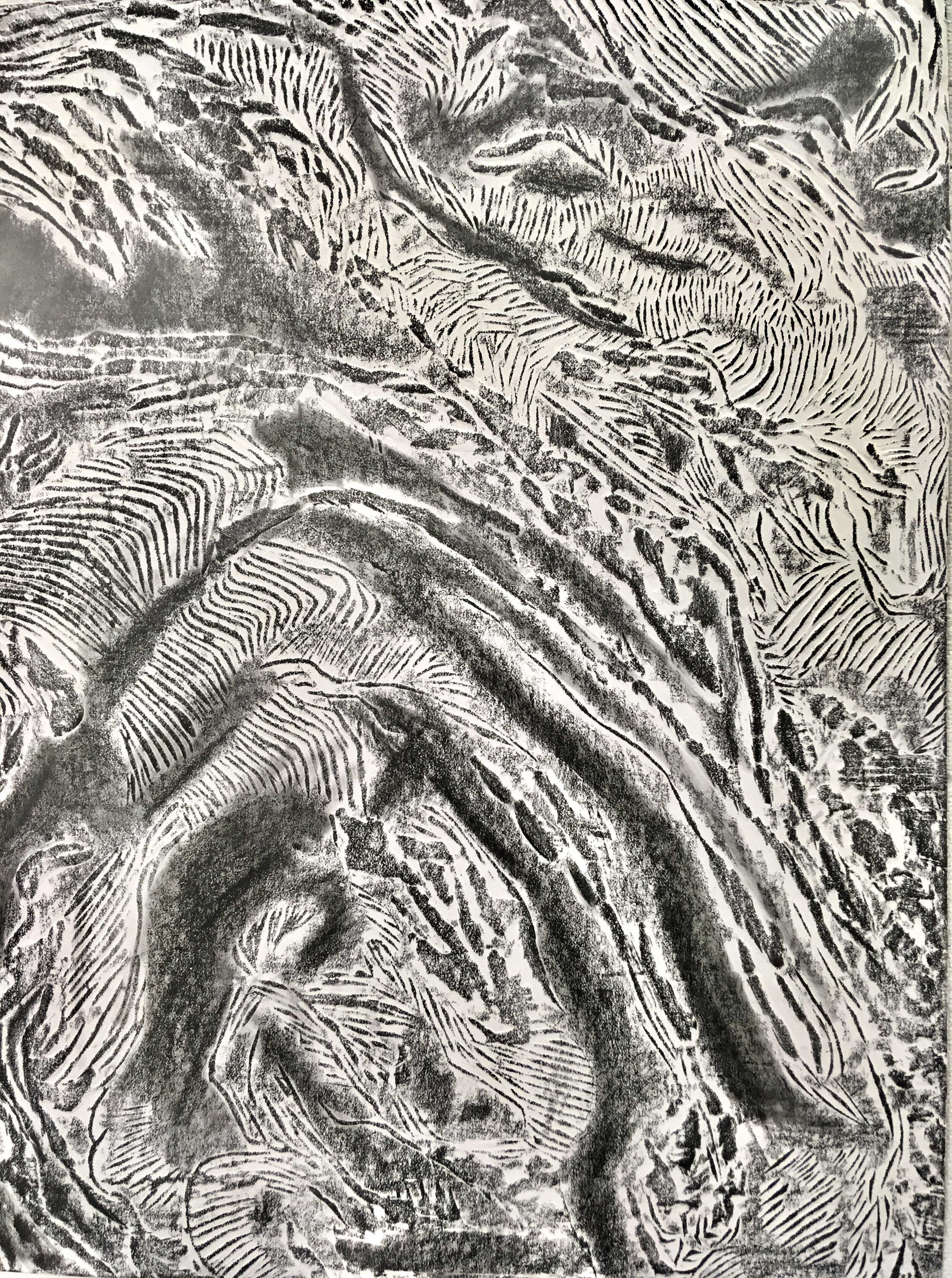
Richard Domenico
Après moi, le déluge.
Richard Domenico’s graphite compositions, arrived at through the Surrealist technique of frottage, churn vortexes of placid turmoil. In them, we do not see the forests of symbols tended by Max Ernst; the whispers issuing from these tempests reach as far as the ears of Géricault, but Medusa’s raft has been dashed on their jagged peaks. Architectural elements thrown into rubbed relief liquify in these works. The act of throwing into relief jolts these features from their frozen state, thawing their hypostasis. But as soon as fragments of the world as it is have begun to relax and denature, they revolt. New forms coagulate, resurgent. Domenico’s hurricanes pour over flat planes of paper in waves of absolute chiaroscuro. Their glowing, tenebrous unity touches on the truth of frottage as a technique: revelation of the present’s superimposition on the past. The mutable contours of natural history attain to speech — garbled and eloquent — in Domenico’s deluge.
—Austin Carder








(from top to bottom, left to right)
No. 08119.2, Graphite frottage of woodlock on paper, 24 x 18 in, 2019.
No. 071619.1, Graphite frottage of woodlock on paper, 24 x 18 in, 2019.
No. 090719.4 (Surface of Salvaged Limestone, Slate, and Various Woodblocks), Graphite frottage on paper, 36 x 24 in, 2019.
No. 071920.8, Graphite frottage of woodblock on paper, 18 x 24 in, 2019
No. 111118.67, Woodblock embossment with graphite, 16 x 20 in, 2018.
No. 112219.7, Graphite frottage (rubbing of corrosion inside Adler & Sullivan’s 1888 Auditorium Theater), 24 x 18 in, 2019.
No. 072919.3, Graphite frottage of woodblock on paper, 24 x 18 in, 2019.
No. 091019.12, Graphite frottage, 12 x 19 in, 2019.
Richard Domenico (b. 1997) is a Chicago based artist, whose practice revolves around the capture of memory through texture. Trained as a printmaker, and specializing in woodcut, Domenico carves compositions and produces large to medium scale drawings. He employs frottage (developed by the Surrealists to form new compositions with found textures) as a combination of both drawing and print. He composes these prints by combining and manipulating graphite rubbings from historically significant architectural locations; primarily late 19th Century Chicago structures. This compositional technique is used by Domenico to capture textures of woodwork, iron work, ornamental terra cotta, mosaic, hardware, plaster, stone and brick corrosion. He uses fragments from historic structures in the contemporary setting, many of which have been demolished or since destroyed.
You can see more of Richard’s work on his website and Instagram.
